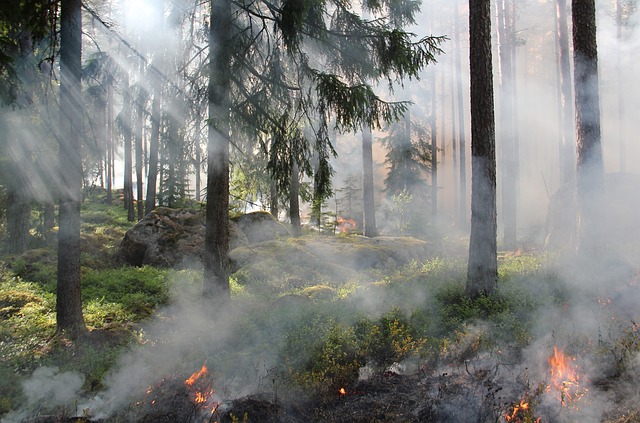-
Table of Contents
- Exploring the Benefits of Collaboration between UNESCO World Heritage Convention and CITES for Conservation and Sustainable Wildlife Trade in World Heritage Sites
- Examining the Challenges of Implementing Collaboration between UNESCO World Heritage Convention and CITES for Conservation and Sustainable Wildlife Trade in World Heritage Sites
- Investigating the Impact of Collaboration between UNESCO World Heritage Convention and CITES for Conservation and Sustainable Wildlife Trade in World Heritage Sites
- Q&A
The UNESCO World Heritage Convention and CITES have been working together for many years to promote conservation and sustainable wildlife trade in World Heritage Sites. The two organizations have collaborated on a number of initiatives, including the development of guidelines for the sustainable management of wildlife in World Heritage Sites, the establishment of a global monitoring system for wildlife trade, and the implementation of a certification system for legal and sustainable wildlife trade. Through these efforts, the two organizations have been able to ensure that wildlife trade in World Heritage Sites is conducted in a manner that is both sustainable and respectful of the environment. This collaboration has been instrumental in helping to protect the world’s most precious natural and cultural heritage sites.
Exploring the Benefits of Collaboration between UNESCO World Heritage Convention and CITES for Conservation and Sustainable Wildlife Trade in World Heritage Sites
The UNESCO World Heritage Convention and the Convention on International Trade in Endangered Species of Wild Fauna and Flora (CITES) are two of the most important international agreements for the conservation of natural heritage and the sustainable use of wildlife resources. Both conventions have been instrumental in protecting and preserving the world’s most important natural sites, and their collaboration could be even more beneficial for the conservation of wildlife and sustainable wildlife trade in World Heritage Sites.
The UNESCO World Heritage Convention is an international agreement that seeks to protect and preserve the world’s most important cultural and natural sites. It has been in force since 1972 and currently has 193 signatory countries. The Convention seeks to protect sites of outstanding universal value, and it has been successful in doing so.
The Convention on International Trade in Endangered Species of Wild Fauna and Flora (CITES) is an international agreement that seeks to regulate the international trade of endangered species of wild fauna and flora. It has been in force since 1975 and currently has 183 signatory countries. CITES seeks to ensure that international trade in endangered species does not threaten their survival.
The collaboration between the UNESCO World Heritage Convention and CITES could be beneficial for the conservation of wildlife and sustainable wildlife trade in World Heritage Sites. The UNESCO World Heritage Convention seeks to protect sites of outstanding universal value, while CITES seeks to regulate the international trade of endangered species. By working together, the two conventions could ensure that the international trade of endangered species does not threaten the survival of species in World Heritage Sites.
The collaboration between the two conventions could also be beneficial for the sustainable use of wildlife resources in World Heritage Sites. CITES could help to ensure that the international trade of wildlife resources is conducted in a sustainable manner, while the UNESCO World Heritage Convention could help to ensure that the resources are used in a way that does not threaten the survival of species in World Heritage Sites.
The collaboration between the UNESCO World Heritage Convention and CITES could also be beneficial for the conservation of wildlife in World Heritage Sites. The two conventions could work together to ensure that the international trade of endangered species does not threaten the survival of species in World Heritage Sites, while also ensuring that the resources are used in a sustainable manner.
In conclusion, the collaboration between the UNESCO World Heritage Convention and CITES could be beneficial for the conservation of wildlife and sustainable wildlife trade in World Heritage Sites. The two conventions could work together to ensure that the international trade of endangered species does not threaten the survival of species in World Heritage Sites, while also ensuring that the resources are used in a sustainable manner.
Examining the Challenges of Implementing Collaboration between UNESCO World Heritage Convention and CITES for Conservation and Sustainable Wildlife Trade in World Heritage Sites

The UNESCO World Heritage Convention and the Convention on International Trade in Endangered Species of Wild Fauna and Flora (CITES) are two of the most important international agreements for the conservation of natural heritage and the sustainable use of wildlife resources. However, the implementation of collaboration between these two conventions has been challenging.
One of the main challenges is the lack of coordination between the two conventions. The World Heritage Convention focuses on the conservation of natural heritage, while CITES focuses on the sustainable use of wildlife resources. As a result, there is often a lack of understanding between the two conventions, which can lead to conflicting objectives and policies.
Another challenge is the lack of resources available to implement collaboration between the two conventions. Both conventions are underfunded and lack the capacity to effectively coordinate their efforts. This can lead to a lack of communication between the two conventions, which can further complicate the implementation of collaboration.
Finally, there is a lack of political will to implement collaboration between the two conventions. Many governments are reluctant to commit resources to collaboration between the two conventions, as they are often seen as competing interests. This can make it difficult to secure the necessary funding and resources to effectively implement collaboration.
Despite these challenges, there are a number of initiatives that have been successful in promoting collaboration between the two conventions. For example, the World Heritage-CITES Programme has been established to promote collaboration between the two conventions. This programme has been successful in raising awareness of the importance of collaboration between the two conventions and has helped to facilitate the implementation of joint projects.
In conclusion, while there are a number of challenges to implementing collaboration between the UNESCO World Heritage Convention and CITES for conservation and sustainable wildlife trade in World Heritage Sites, there are also a number of initiatives that have been successful in promoting collaboration between the two conventions. With the right resources and political will, collaboration between the two conventions can be successful in protecting and conserving natural heritage and promoting sustainable use of wildlife resources.
Investigating the Impact of Collaboration between UNESCO World Heritage Convention and CITES for Conservation and Sustainable Wildlife Trade in World Heritage Sites
The collaboration between UNESCO World Heritage Convention and CITES (Convention on International Trade in Endangered Species of Wild Fauna and Flora) is an important step in the conservation and sustainable wildlife trade of World Heritage Sites. This partnership has been in place since 1975, and has been instrumental in protecting the world’s most precious natural and cultural sites.
The World Heritage Convention is an international agreement that seeks to protect and preserve sites of outstanding universal value. It is the most comprehensive international agreement for the protection of cultural and natural heritage. CITES is an international agreement that regulates the international trade of endangered species of wild fauna and flora. It is the most comprehensive international agreement for the conservation of endangered species.
The collaboration between UNESCO World Heritage Convention and CITES has been instrumental in protecting the world’s most precious natural and cultural sites. This partnership has enabled the two organizations to work together to ensure that the trade of endangered species is sustainable and does not threaten the integrity of the World Heritage Sites. The collaboration has also enabled the two organizations to develop and implement strategies to reduce the illegal trade of endangered species.
The collaboration between UNESCO World Heritage Convention and CITES has also enabled the two organizations to develop and implement strategies to promote sustainable tourism in World Heritage Sites. This includes the development of educational programs and initiatives to raise awareness about the importance of conservation and sustainable wildlife trade. The collaboration has also enabled the two organizations to develop and implement strategies to reduce the impact of human activities on World Heritage Sites.
The collaboration between UNESCO World Heritage Convention and CITES has been instrumental in protecting the world’s most precious natural and cultural sites. This partnership has enabled the two organizations to work together to ensure that the trade of endangered species is sustainable and does not threaten the integrity of the World Heritage Sites. The collaboration has also enabled the two organizations to develop and implement strategies to reduce the illegal trade of endangered species, promote sustainable tourism, and reduce the impact of human activities on World Heritage Sites. This partnership has been essential in protecting the world’s most precious natural and cultural sites and ensuring that they are preserved for future generations.
Q&A
Q1: What is the purpose of the collaboration between UNESCO World Heritage Convention and CITES for Conservation and Sustainable Wildlife Trade in World Heritage Sites?
A1: The collaboration between UNESCO World Heritage Convention and CITES for Conservation and Sustainable Wildlife Trade in World Heritage Sites is intended to ensure that wildlife trade in World Heritage Sites is conducted in a sustainable manner, with the aim of protecting and conserving the natural and cultural heritage of these sites. The collaboration seeks to ensure that wildlife trade is conducted in a way that does not threaten the integrity of the World Heritage Site, and that it is conducted in accordance with the principles of the Convention on International Trade in Endangered Species of Wild Fauna and Flora (CITES).
Q2: What are the main objectives of the collaboration between UNESCO World Heritage Convention and CITES for Conservation and Sustainable Wildlife Trade in World Heritage Sites?
A2: The main objectives of the collaboration between UNESCO World Heritage Convention and CITES for Conservation and Sustainable Wildlife Trade in World Heritage Sites are to:
– Promote the conservation and sustainable use of wildlife in World Heritage Sites;
– Ensure that wildlife trade in World Heritage Sites is conducted in accordance with the principles of the Convention on International Trade in Endangered Species of Wild Fauna and Flora (CITES);
– Develop and implement strategies to reduce the impacts of wildlife trade on World Heritage Sites;
– Monitor and evaluate the impacts of wildlife trade on World Heritage Sites;
– Promote public awareness and education about the importance of sustainable wildlife trade in World Heritage Sites.
Q3: What are the benefits of the collaboration between UNESCO World Heritage Convention and CITES for Conservation and Sustainable Wildlife Trade in World Heritage Sites?
A3: The collaboration between UNESCO World Heritage Convention and CITES for Conservation and Sustainable Wildlife Trade in World Heritage Sites provides a number of benefits, including:
– Improved conservation and sustainable use of wildlife in World Heritage Sites;
– Reduced impacts of wildlife trade on World Heritage Sites;
– Increased public awareness and education about the importance of sustainable wildlife trade in World Heritage Sites;
– Improved monitoring and evaluation of the impacts of wildlife trade on World Heritage Sites;
– Improved enforcement of CITES regulations in World Heritage Sites.The collaboration between UNESCO World Heritage Convention and CITES for conservation and sustainable wildlife trade in World Heritage Sites is a positive step towards protecting the world’s natural heritage. This partnership will help to ensure that the world’s most important sites are managed in a sustainable manner, and that wildlife trade is conducted in a way that is beneficial to both the environment and local communities. By working together, these two organizations can help to ensure that the world’s most important sites are preserved for future generations.
![]()











